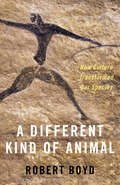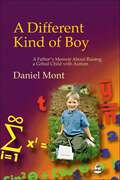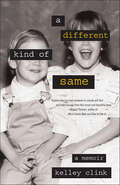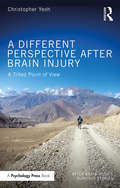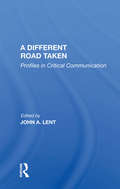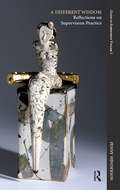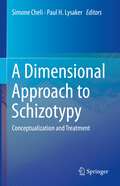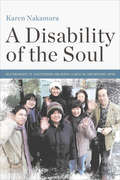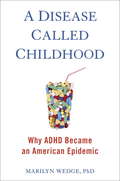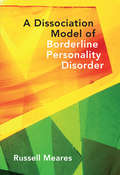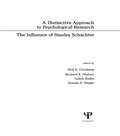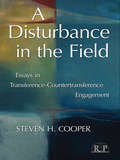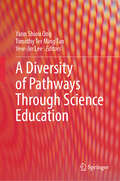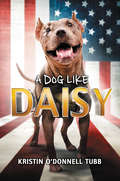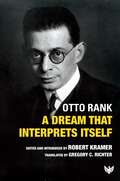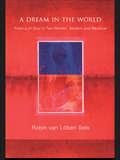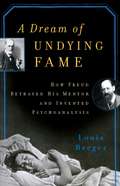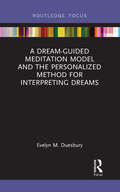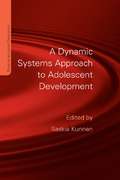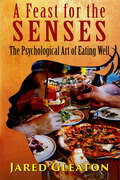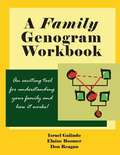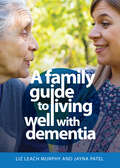- Table View
- List View
A Different Existence: Principles of Phenomenological Psychopathology
by J. H. van den BergPsychological classic.
A Different Kind of Animal: How Culture Transformed Our Species
by Robert BoydHow our ability to learn from each other has been the essential ingredient to our remarkable success as a speciesHuman beings are a very different kind of animal. We have evolved to become the most dominant species on Earth. We have a larger geographical range and process more energy than any other creature alive. This astonishing transformation is usually explained in terms of cognitive ability—people are just smarter than all the rest. But in this compelling book, Robert Boyd argues that culture—our ability to learn from each other—has been the essential ingredient of our remarkable success.A Different Kind of Animal demonstrates that while people are smart, we are not nearly smart enough to have solved the vast array of problems that confronted our species as it spread across the globe. Over the past two million years, culture has evolved to enable human populations to accumulate superb local adaptations that no individual could ever have invented on their own. It has also made possible the evolution of social norms that allow humans to make common cause with large groups of unrelated individuals, a kind of society not seen anywhere else in nature. This unique combination of cultural adaptation and large-scale cooperation has transformed our species and assured our survival—making us the different kind of animal we are today.Based on the Tanner Lectures delivered at Princeton University, A Different Kind of Animal features challenging responses by biologist H. Allen Orr, philosopher Kim Sterelny, economist Paul Seabright, and evolutionary anthropologist Ruth Mace, as well as an introduction by Stephen Macedo.
A Different Kind of Boy: A Father's Memoir About Raising a Gifted Child with Autism
by Dan MontA little nine-year-old boy looks down at the gymnasium floor. The room is filled with children who like and respect him, but he has no real friends. He can barely name anyone in his class, and has trouble with the simplest things - recognizing people, pretending, and knowing when people are happy or angry or sad. Much of his life has been filled with anxiety. He is out of step with the world, which to him is mostly a whirlwind that must be actively decoded and put into order. And yet he was only one of seven fourth graders in the United States to ace the National Math Olympiad. In fifth grade he finished second in a national math talent search. That boy is autistic. He is also loving, brilliant and resilient. In this book, his father writes about the joys, fears, frustration, exhilaration, and exhaustion involved in raising his son. He writes about the impact on his family, the travails of navigating the educational system, and the lessons he has learned about life, what it means to connect with other people, and how one builds a life that suits oneself. And, oh, yes, math. Lots about math.
A Different Kind of Same: A Memoir
by Kelley ClinkTwo weeks before his college graduation, Kelley Clink’s younger brother died by suicide. Though he’d been diagnosed with bipolar disorder as a teenager and had attempted suicide once before, the news came as a shock—and it sent Kelley into a spiral of guilt and grief.After Matt’s death, a chasm opened between the brother Kelley had known and the brother she’d buried. She kept telling herself she couldn’t understand why he’d done it—but the truth was, she could. Several years before he’d been diagnosed with bipolar disorder, she’d been diagnosed with depression. Several years before he first attempted suicide by overdose, she had attempted suicide by overdose. She’d blazed the trail he’d followed. If he couldn’t make it, what hope was there for her?A Different Kind of Same traces Kelley’s journey through grief, her investigation into the role her own depression played in her brother’s death, and, ultimately, her path toward acceptance, forgiveness, resilience, and love.
A Different Perspective After Brain Injury: A Tilted Point of View (After Brain Injury: Survivor Stories)
by Christopher YeohWhilst preparing for his travel adventures into a world he had yet to explore, Christopher Yeoh was involved in a road traffic accident and experienced something few others would be "privileged" to witness. Eight days in a coma, more than a year in and out of hospital and a gradual re-introduction to the world of work. A Different Perspective After Brain Injury: A Tilted Point of View is written entirely by the survivor, providing an unusually introspective and critical personal account of life following a serious blow to the head. It charts the initial insult, early rehabilitation, development of understanding, the return of emotion, moments of triumph and regression into depression, the exercise of reframing how a brain injury is perceived and a return to work. It also describes the mental adjustments of awareness and acceptance alongside the physical recovery process. Readily accessible to the general public, this book will also be of particular interest to professionals involved in the care of people who have had significant brain injuries, brain injury survivors, their families and friends and also those who fund and organise health and social care. This unique author account will provide a degree of understanding of what living with a hidden disability is really like.
A Different Road Taken: Profiles In Critical Communication
by John A LentDallas Smythe, George Gerbner, Herbert Schiller, James Halloran, Kaarle Nordenstreng- these five seminal figures form the backbone of current scholarship in critical communication. From policy research to television demographics and from economic globalization to cultural imperialism, their insights and discoveries have given both scholars and the
A Different Wisdom: Reflections on Supervision Practice: Guide to Supervision (The\guide To Supervision Ser.)
by Penny HendersonBritain has a fine tradition of writing about supervision practice. This book connects to this by organising reflection around the practice taken from the author's sixteen years experience as a practitioner. Taking three broad sets of tasks of supervision as an organising frame, the book weaves examples of professional experience with current research and other reflective writing. From a broadly humanistic perspective, it examines the developmental journey of a supervisor interested in the overlap of the personal and the professional.
A Dimensional Approach to Schizotypy: Conceptualization and Treatment
by Paul H. Lysaker Simone CheliThis timely volume explores the range of personality traits and psychosocial deficits which are associated with the broadly defined construct of schizotypy. Describing schizotypy as a phenomenon that can be located on a continuum ranging from sub-clinical states to severe disorders, the editors have brought together experts in this field to discuss approaches to assessment, conceptualization, and treatment. This volume aims to provide a unique and clinically oriented perspective on schizotypy as a feature of personality and psychopathology. An essential resource for professionals, researchers, and academics the reader will gain knowledge of: Underlying maladaptive traits that can emerge as schizotypyDimensional and transdiagnostic approaches to psychopathologyRelationship to metacognition, mentalizing, attachment, self-criticism and interpersonal criticism
A Disability of the Soul
by Karen NakamuraBethel House, located in a small fishing village in northern Japan, was founded in 1984 as an intentional community for people with schizophrenia and other psychiatric disorders. Using a unique, community approach to psychosocial recovery, Bethel House focuses as much on social integration as on therapeutic work. As a centerpiece of this approach, Bethel House started its own businesses in order to create employment and socialization opportunities for its residents and to change public attitudes toward the mentally ill, but also quite unintentionally provided a significant boost to the distressed local economy. Through its work programs, communal living, and close relationship between hospital and town, Bethel has been remarkably successful in carefully reintegrating its members into Japanese society. It has become known as a model alternative to long-term institutionalization. In A Disability of the Soul, Karen Nakamura explores how the members of this unique community struggle with their lives, their illnesses, and the meaning of community. Told through engaging historical narrative, insightful ethnographic vignettes, and compelling life stories, her account of Bethel House depicts its achievements and setbacks, its promises and limitations. The book is accompanied by a DVD containing two fascinating documentaries about Bethel made by the author-Bethel: Community and Schizophrenia in Northern Japan and A Japanese Funeral (winner of the Society for Visual Anthropology Short Film Award and the Society for East Asian Anthropology David Plath Media Award). A Disability of the Soul is a sensitive and multidimensional portrait of what it means to live with mental illness in contemporary Japan.
A Disease Called Childhood
by Marilyn WedgeA surprising new look at the rise of ADHD in America, arguing for a better paradigm for diagnosing and treating our children In 1987, only 3 percent of American children were diagnosed with attention-deficit/hyperactivity disorder, also known as ADHD. By 2000, that number jumped to 7 percent, and in 2014 the number rose to an alarming 11 percent. To combat the disorder, two thirds of these children, some as young as three years old, are prescribed powerful stimulant drugs like Ritalin and Adderall to help them cope with symptoms. Meanwhile, ADHD rates have remained relatively low in other countries such as France, Finland, and the United Kingdom, and Japan, where the number of children diagnosed with and medicated for ADHD is a measly 1 percent or less. Alarmed by this trend, family therapist Marilyn Wedge set out to understand how ADHD became an American epidemic. If ADHD were a true biological disorder of the brain, why was the rate of diagnosis so much higher in America than it was abroad? Was a child's inattention or hyperactivity indicative of a genetic defect, or was it merely the expression of normal behavior or a reaction to stress? Most important, were there alternative treatments that could help children thrive without resorting to powerful prescription drugs? In an effort to answer these questions, Wedge published an article in Psychology Today entitled "Why French Kids Don't Have ADHD" in which she argued that different approaches to therapy, parenting, diet, and education may explain why rates of ADHD are so much lower in other countries.In A Disease Called Childhood, Wedge examines how myriad factors have come together, resulting in a generation addictied to stimulant drugs, and a medical system that encourages diagnosis instead of seeking other solutions. Writing with empathy and dogged determination to help parents and children struggling with an ADHD diagnosis, Wedge draws on her decades of experience, as well as up-to-date research, to offer a new perspective on ADHD. Instead of focusing only on treating symptoms, she looks at the various potential causes of hyperactivity and inattention in children and examines behavioral and environmental, as opposed to strictly biological, treatments that have been proven to help. In the process, Wedge offers parents, teachers, doctors, and therapists a new paradigm for child mental health--and a better, happier, and less medicated future for American children
A Dissociation Model of Borderline Personality Disorder (Norton Series on Interpersonal Neurobiology)
by Russell MearesA neurobiologically informed approach to a very difficult-to-treat disorder. This book addresses one of the fundamental, understudied issues of borderline personality disorder (BPD): dissociation and a lack of sense of self. Exploring dissociation from developmental, neurobiological, and behavioral perspectives, Russell Meares presents an original theory of BPD, offering new insights into this debilitating disorder and hope for recovery. BPD is not a new phenomenon, but much about it remains unclear and controversial. Meares's three-stage treatment emphasizes the failure of synthesis among the elements of psychic life, the need for both personal and social development, integration of unconscious traumatic memory, affect regulation, hallucinosis, stimulus entrapment, paranoid states, and ultimately, restoration of the self. Mental health professionals working with patients suffering from symptoms of BPD will find an invaluable theoretical grounding for treating the difficult--and varied--symptoms of BPD.
A Distinctive Approach To Psychological Research: The Influence of Stanley Schachter
by Richard E. Nisbett Judith Rodin Neil E. Grunberg Jerome E. SingerFirst published in 1987. Routledge is an imprint of Taylor & Francis, an informa company.
A Disturbance in the Field: Essays in Transference-Countertransference Engagement (Relational Perspectives Book Series)
by Steven H. CooperThe field, as Steven Cooper describes it, is comprised of the inextricably related worlds of internalized object relations and interpersonal interaction. Furthermore, the analytic dyad is neither static nor smooth sailing. Eventually, the rigorous work of psychoanalysis will offer a fraught opportunity to work through the most disturbing elements of a patient's inner life as expressed and experienced by the analyst - indeed, a disturbance in the field. How best to proceed when such tricky yet altogether common therapeutic situations arise, and what aspects of transference/countertransference should be explored in the service of continued, productive analysis? These are two of the questions that Steven Cooper explores in this far-ranging collection of essays on potentially thorny areas of the craft. His essays try to locate some of the most ineffable types of situations for the analyst to take up with patients, such as the underlying grandiosity of self-criticism; the problems of too much congruence between what patients fantasize about and analysts wish to provide; and the importance of analyzing hostile and aggressive aspects of erotic transference. He also tries to turn inside-out the complexity of hostile transference and countertransference phenomena to find out more about what our patients are looking for and repudiating. Finally, Cooper raises questions about some of our conventional definitions of what constitutes the psychoanalytic process. Provocatively, he takes up the analyst's countertransference to the psychoanalytic method itself, including his responsibility and sources of gratification in the work. It is at once a deeply clinical book and one that takes a post-tribal approach to psychoanalytic theory - relational, contemporary Kleinian, and contemporary Freudian analysts alike will find much to think about and debate here.
A Diversity of Pathways Through Science Education
by Yew-Jin Lee Yann Shiou Ong Timothy Ter Ming TanThis book presents the work of academics who contributed their work at the International Science Education Conference (ISEC) 2021, in alignment with the conference theme '20/20 Vision for Science Education Research.' Collectively, the chapters aim to evoke intellectual dialogues on current and future trends in science education. It features chapters that are grouped thematically into three sections: Questions and Questioning in Science/STEM education, Developing Science Teaching and Assessment, and History, Philosophy, and Sociology of Science/Engineering, and Informal Learning. Through the various sections, the book presents empirical studies in science and engineering classrooms or laboratories, puts forward a framework for problem-based learning, provides an account of a prominent scientist’s efforts in promoting practical science through analysis of historical documents, and uncovers trends in informal science learning space research through a review of literature. Each section is introduced by a commentary with further insights and thought-provoking questions on ideas raised in the chapters. The book also includes a 'Notes to Our Future Colleagues' section in each chapter, which presents readers with a collective vision for the state of science education research in the year 2050.
A Dog Like Daisy
by Kristin O'Donnell TubbMax meets A Dog Called Homeless in this sweet and poignant middle grade novel told from the humorous, thoughtful perspective of a rescued pit bull as she trains to be a service dog for an injured veteran and his family.Daisy has only ten weeks to prove her usefulness or else be sent back to the pound. Yet if she goes back, who will protect Colonel Victor from his PTSD attacks? Or save the littler human, Micah, from those infernal ear muzzles he calls earphones? What if no one ever adopts her again?Determined to become the elite protector the colonel needs, Daisy vows to ace the service dog test. She’ll accept the ridiculous leash and learn to sit, heel, shake, even do your business, Daisy when told to. But Daisy must first learn how to face her own fears from the past or risk losing the family she’s so desperate to guard—again.
A Dream That Interprets Itself
by Otto RankSigmund Freud hired Otto Rank as his secretary and funded Rank's PhD in literature at the University of Vienna. In 1910, at age 26, Rank published 'A Dream That Interprets Itself'. Freud could not praise the essay highly enough; impressed by Rank's erudition, Freud invited his protege to contribute two chapters, on poetry and myth, in 1914 to The Interpretation of Dreams. Thereafter, Rank's name would appear under Freud's on the title page of the foundational text of psychoanalysis for the next fifteen years. Grateful for Freud's generosity, Rank published a stream of articles and books advancing psychoanalytic thinking into almost every area of the arts and humanities, thus demonstrating to Freud's critics that the validity of psychoanalysis did not hinge solely on his autobiographical work The Interpretation of Dreams. Rank died in 1939 and his work fell out of favor until a renaissance of interest beginning in the 1970s. This is the first English translation of Rank's masterpiece of dream interpretation, originally published in 1910 as "Ein Traum, der sich selbst deutet" in the journal Jahrbuch fur Psychoanalytische und Psychopathologische Forschungen, 2(2): 465-540. It is accompanied by an in-depth introduction from editor Robert Kramer, the world's only Rankian psychologist. The book is essential reading for all psychoanalytic scholars, practitioners, and historians, and those interested in dream analysis.
A Dream in the World: Poetics of Soul in Two Women, Modern and Medieval
by Robin van Lõben SelsHow can science and religion co-exist in the modern discipline of psychotherapy? A Dream in the World explores the interfaces between religious experience and dream analysis. At the heart of this book is a selection of dreams presented by the author's patient during analysis, which are compared with the dreams of Hadewijch, a thirteenth century woman mystic. The patient's dreams led the modern woman to an unanticipated breakthrough encounter with the divine, her "experience of soul". The experience reoriented and energized her life, and became her "dream-in-the-world". Following Jung's idea that the psyche has a religious instinct, Robin van Loben Sels demonstrates that the healing process possible through psychotherapy can come from beyond the psyche and can not be explained by our usual theories of scientific psychology.Written in flowing, easily-read language A Dream in the World details a classical Jungian analysis of a woman's dreams, and searches the relationship between religious encounter, psyche and soul.
A Dream of Undying Fame: How Freud Betrayed His Mentor and Invented Psychoanalysis
by Louis BregerIn 1877, a young Freud met an established physician named Josef Breuer and they began a collaboration that would lead to the publication of the classic work, Studies on Hysteria. But by the time it released, Freud was moving to establish himself as a major figure in the treatment of mentally ill patients, and would let no one stand in his way. He consequently minimized Breuer’s contributions, betraying his former mentor and benefactor. In A Dream of Undying Fame, renowned psychologist Louis Breger narrates the story behind the creation of Studies as well as the case of Anna O. , which helped contribute to Freud’s definition of "neurosis. ” Breger reveals that Freud’s own self-mythologizing and history not only affected everything he did in life, but also helped shape his emerging beliefs about psychoanalysis. Illustrating the importance of personality and social context behind an intellectual breakthrough, Breger provides an in-depth look at a field that reshaped our understanding of what it means to be human.
A Dream-Guided Meditation Model and the Personalized Method for Interpreting Dreams (Routledge Focus on Mental Health)
by Evelyn M. DuesburyA Dream-Guided Meditation Model and the Personalized Method for Interpreting Dreams presents a model for meditation that counselors can use with clients regardless of gender, race, national origin, religion, age, or marital status. Using the model, readers can, if they wish, learn to interpret nighttime dreams. Even readers who choose not to learn to interpret their dreams may find that the meditation model assists with dream guidance.
A Dynamic Systems Approach to Adolescent Development (Studies in Adolescent Development)
by Saskia KunnenThe dynamic systems approach is a rapidly expanding advancement in the study of developmental research, particularly in the domain of adolescent development. It provides a unique way of examining the subject, and this innovative study of developmental processes helps social scientists to translate dynamic systems conceptualizations into clear empirical research that readers will be able to implement themselves. The first part of this edited book discusses techniques that describe and assess specific process characteristics such as variability, sudden jumps and attractor states. The second part explores the different techniques for building a dynamic systems model, which can simulate the behaviour of a system to investigate the mechanisms behind the processes. Each chapter describes one technique and is based on a specific practical example of its application in adolescent development. Step-by-step instructions for model-building and examples of ready-made models are provided on the website that belongs to the book: www.psypress.com/dynamic-systems-approach. This book provides a clear step-by-step description of theories and techniques that are designed for the study of developmental processes, and is therefore ideal for researchers of developmental psychology who do not specialise in statistics or research methods.
A FEAST FOR THE SENSES: THE PSYCHOLOGICAL ART OF EATING WELL
by Jared Scofield GleatonIndulge in a culinary odyssey where each dish tells a story, and every bite unlocks memories. In "A Feast for the Senses: The Psychological Art of Eating Well," author Jared Gleaton takes readers on a journey through the culinary experience. From cherished family recipes to Oklahoma's vibrant dining scene, Gleaton intertwines tradition, taste, and texture. As the son of a renowned "pie fiend," his exploration of food is both personal and profound, offering a rich feast for the senses. Through vivid storytelling, he unveils the art of "foodology" - where taste, smell, touch, vision, and sound converge to create unforgettable experiences. Whether reminiscing about family gatherings or embarking on new adventures, this book will nourish both body and soul. Join Gleaton at the table and feast on the rich tapestry of life, one bite at a time. Jared Gleaton is a nationally certified school psychologist and passionate food reviewer. With degrees in Psychology and Educational Leadership, Jared combines his academic expertise with his culinary enthusiasm to explore the intersection of psychology and food Residing in Bartlesville, Oklahoma, he brings regional pride and New England roots to his reviews, uncovering the stories and emotions behind each dish. Jared's work celebrates connection and understanding through food, inviting readers to join him on a sensory journey of gastronomic enlightenment.
A Family Genogram Workbook
by Israel Galindo Elaine Boomer Don ReaganA Family Genogram Workbook, by Israel Galindo, Elaine Boomer, and Don Reagan, is an easy to use, but powerful, guide to understanding your family and how it shaped you. This workbook will take you step-by-step to learn how to create your own family genogram. A genogram is an exciting tool for understanding and interpreting family history and relationships. By working through various exercises and activities in A Family Genogram Workbook you will gain insight into your family and your place in it. The workbook has four chapters. The first, a tutorial, shows readers, step-by-step, how to create their own family genogram so that they can quickly reap the benefits of this powerful tool for understanding family emotional process. The workbook format contains work pages so the reader can create a genogram right in the book. Subsequent chapters provide basic information on how to interpret and how to use the genogram. The chapter titled The 20 Questions to Ask About Your Family will help readers focus on key issues related to family emotional process. By working through various exercises and activities in A Family Genogram Workbook readers will gain insight into their families, how they work, and their place in it. Along the way, readers will also acquire an understanding of basic Family Systems Theory concepts and terminology. This resource is suitable for courses on family systems, social work practice, individual or group study, marriage and family retreats or workshops, for premarital counseling with couples or blended families, coaching relationships, or for personal use.
A Family Guide to Living Well with Dementia
by Liz Leach Murphy Jayna PatelGain the knowledge and insight you need to support your loved one with dementia to live life as they wish. When a family member is diagnosed with dementia it’s difficult to know what to do. Do you worry you don’t have the skills and knowledge to support them? And what about looking after your own mental health?A Family Guide to Living Well with Dementia is here to help. Written by someone with lots of experience in this field, it gives you the knowledge and insight to be able to support the person with dementia to live life as they wish. This easy-to-follow and accessible guide contains information that is intended to support people to plan for how they want to live their life, receive their care, and for end-of-life planning.In this book you will find: Details of the different types of dementia and the dementia journey Explanations of the various Person Centred approaches to dementia care Information about people's rights within the health and social care legislation Insights into behaviour and methods of communication Support options available to you and your loved one, paid and community-based. Often people who have been diagnosed with dementia and their families report feeling lost and not sure what to do apart from learning to adapt and find a way to do their best in what can often be difficult circumstances. This book provides easy, engaging, and practical content for things to consider and conversations to have so as to be able to provide the best care and support on a basis of sound understanding from everyone involved.
A Family Systems Guide to Infidelity: Helping Couples Understand, Recover From, and Avoid Future Affairs (Family Systems Counseling: Innovations Then and Now)
by Paul R. PelusoA Family Systems Guide to Infidelity offers an explanatory model and concrete techniques, enabling therapists and counselors to treat the core of a couple’s relationship problems instead of merely applying a therapeutic bandage. Chapters give therapists proven techniques to help couples redevelop trust, rebalance power, increase satisfaction, and recover from the wounds that infidelity causes. This text uses case studies from clinical practice, examples of public or historical figures, and scenarios from popular movies to illustrate concepts, and it provides a systemic explanatory model for understanding infidelity, one that focuses on marital dissatisfaction, power imbalances, unfulfilled dreams, and the discovery of infidelity.
A Fast Road to the Study of Emotions: An Introduction
by Arne VikanThis book is an ideal introduction to work in psychology and the neurosciences. Walking us through the key topics including historical, developmental and cultural perspectives, the book shows that the different types of emotions each is an evolved adaptive structure that serves a functional purpose. It is shown how these types are expressed differently on the human face, how they are developed in the child, and how they influence and are influenced by culture, health and the ways persons think and perceive. Knowledge of emotions is essential for anyone who plans to work, or whose work already involves, helping, instructing, negotiating, or controlling others. This introductory-level book teaches undergraduates as well as general readers the main components and methods, and helps readers to better understand how emotions operate both within the body and out in the world. It is a valuable resource for undergraduate students in psychology, nursing, social work, physiotherapy and occupational therapy find this book an important accompaniment.

